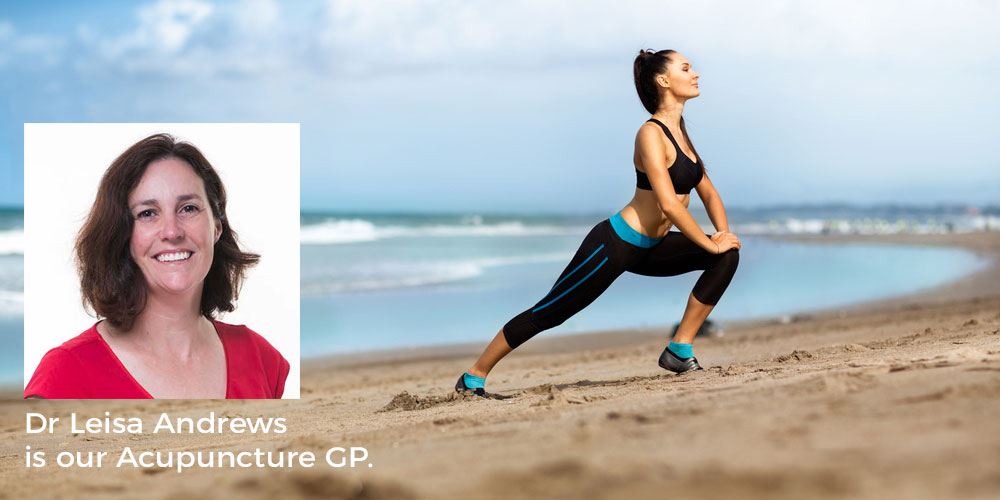Contrary to popular Western belief, acupuncture is not just a system for inserting very fine needles into specific body locations to alleviate pain. So, what is acupuncture, then? Acupuncture is a complete medical protocol focused on correcting imbalances of energy in the body. From its inception in China more than 2,500 years ago, acupuncture has been used traditionally to prevent, diagnose and treat disease, as well as to improve general health.
The traditional explanation for acupuncture’s effectiveness is that it modifies the flow of energy (known as qi or chi) throughout the body, but there is no scientific consensus that this is actually its mechanism of action. Research published in the May 30, 2010 online edition of Nature Neuroscience demonstrated that the effects of acupuncture needling include influencing the activity of adenosine, an amino acid which becomes active in the skin after an injury to ease pain. This may explain in part why pain relief is often experienced as one of the benefits of acupuncture. In fact, much research in the West has focused on this pain-relieving effect, rather than acupuncture’s traditional role of balancing energy to address a wide range of disorders, and the more subtle mechanisms that may be responsible for its overall benefits to health.
https://www.ncbi.nlm.nih.gov/pmc/articles/PMC5481733/
Because the goal of acupuncture is to promote and restore the balance of energy, which flows throughout the body, the benefits of acupuncture can extend to a wide variety of conditions, from emotional disorders (anxiety, depression) to digestive complaints (nausea, vomiting, irritable bowel syndrome). It can be beneficial for pain syndromes due to an injury or associated with chronic degenerative diseases such as rheumatoid arthritis. It can also be helpful in treating neurological problems like migraines or Parkinson’s disease, or as a rehabilitation strategy for individuals who suffered a stroke. Respiratory conditions, including sinusitis and asthma have been relieved with acupuncture, as have many gynaecologic disorders and infertility. Acupuncture has also proved beneficial for reducing fatigue and addictions, and for promoting overall well-being.
Studies indicate that acupuncture can help relieve chronic low back pain, dental pain, migraine headaches, fibromyalgia and symptoms of osteoarthritis. It has been shown to assist in the treatment of emotional pain syndromes such as post-traumatic stress disorder, as well as controlling chemotherapy-induced nausea and vomiting. It has also demonstrated clinical success in achieving pregnancy when used in conjunction with in-vitro fertilisation.
https://www.ncbi.nlm.nih.gov/pmc/articles/PMC5393924/
Typically, the first acupuncture visit involves a comprehensive health history assessment. Questions that are included may seem strange, but in Traditional Chinese Medicine (TCM) – which encompasses acupuncture, herbal medicine, massage and other modalities – energy flow and whole-body interaction are the keys to diagnosing all physical disease. For example, the practitioner may ask to examine your tongue, feel your pulse to help determine energy flow, or ask many questions related to bowel habits and diet, even if these seem to have nothing to do with the primary complaint.
After the initial acupuncture consultation and assessment, the needles are placed in very specific locations. Upon insertion, one may feel a momentary sharp or stinging sensation; however, many report they don’t even feel the majority of the insertions. The acupuncture needles may then be gently manipulated and some practitioners may use heat or even electricity with the needles.
The depth to which the acupuncture needles are inserted varies according to the treatment and the practitioner; however, needles should never be positioned deep enough to puncture organs (other than the skin). The needles are usually left in place for five to 20 minutes, usually no longer than 60 minutes, and then removed. Following an acupuncture treatment, practitioners will usually reassesses the client and often give suggestions for home care. Acute symptoms may require only two to four treatments; whereas for chronic cases, it is common to have as many as 12 or more treatments, usually over a course of eight to 10 weeks. Regular monthly visits may be suggested as preventive measures to decrease stress, improve energy or boost immunity.

